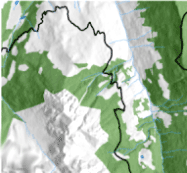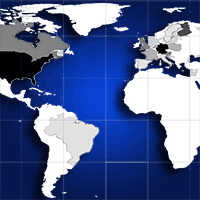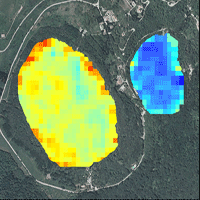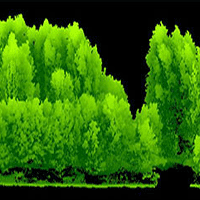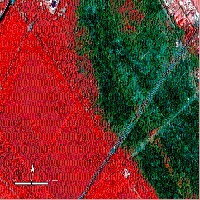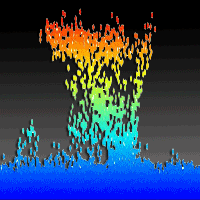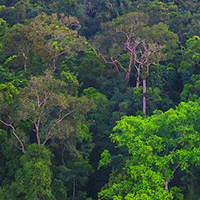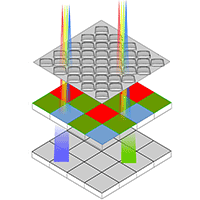
Detecting tree water deficit by very low altitude remote sensing
Hilaire Martin (1) , Sylvain Labbé (2), Patrick Baldet (1), Frédéric Archaux (1), Gwénaël Philippe (1)
iForest - Biogeosciences and Forestry, Volume 10, Issue 1, Pages 215-219 (2017)
doi: https://doi.org/10.3832/ifor1690-009
Published: Feb 11, 2017 - Copyright © 2017 SISEF
Technical Reports
Abstract
In a context of climate change and expected increasing drought frequency, it is important to select tree species adapted to water deficit. Experimentation in tree nurseries makes it possible to control for various factors such as water supply. We analyzed the spectral responses for two genetic varieties of Douglas fir sapling exposed to different levels of water deficit. Our results show that the mean NDVI derived from remote sensing at very low altitudes clearly differentiated stress levels while genetic varieties were partially distinguished.
Keywords
Very Low Altitude Remote Sensing, Water Deficit, Variety, Douglas Fir
Authors’ Info
Authors’ address
Patrick Baldet
Frédéric Archaux
Gwénaël Philippe
IRSTEA National Research Institute of Science and Technology for Environment and Agriculture, Domaine des Barres, F-45290 Nogent-sur-Vernisson (France)
IRSTEA, National Research Institute of Science and Technology for Environment and Agriculture, 361 rue J.F. Breton, BP 5095, F-34196 Montpellier Cedex 5 (France)
Corresponding author
Paper Info
Citation
Martin H, Labbé S, Baldet P, Archaux F, Philippe G (2017). Detecting tree water deficit by very low altitude remote sensing. iForest 10: 215-219. - doi: 10.3832/ifor1690-009
Academic Editor
Giorgio Matteucci
Paper history
Received: Apr 27, 2015
Accepted: Nov 16, 2016
First online: Feb 11, 2017
Publication Date: Feb 28, 2017
Publication Time: 2.90 months
Copyright Information
© SISEF - The Italian Society of Silviculture and Forest Ecology 2017
Open Access
This article is distributed under the terms of the Creative Commons Attribution-Non Commercial 4.0 International (https://creativecommons.org/licenses/by-nc/4.0/), which permits unrestricted use, distribution, and reproduction in any medium, provided you give appropriate credit to the original author(s) and the source, provide a link to the Creative Commons license, and indicate if changes were made.
Web Metrics
Breakdown by View Type
Article Usage
Total Article Views: 49803
(from publication date up to now)
Breakdown by View Type
HTML Page Views: 41946
Abstract Page Views: 2931
PDF Downloads: 3469
Citation/Reference Downloads: 37
XML Downloads: 1420
Web Metrics
Days since publication: 3247
Overall contacts: 49803
Avg. contacts per week: 107.37
Citation Metrics
Article Citations
Article citations are based on data periodically collected from the Clarivate Web of Science web site
(last update: Mar 2025)
(No citations were found up to date. Please come back later)
Publication Metrics
by Dimensions ©
Articles citing this article
List of the papers citing this article based on CrossRef Cited-by.
References
Modélisation de la canopée forestière par photogrammétrie depuis les images acquises par drone [Modeling forest canopy by photogrammetry from images acquired by drone]. Revue Française de Photogrammétrie et de Télédétection 206: 45-54. [in French]
Online | Gscholar
Monitoring vegetation systems in the great plains with ERTS. In: Proceeding of the “3rd ETRS Symposium”, NASA SP-351 1, US Government Printing Office, Washington, DC, USA, pp. 309-317.
Gscholar
Analyse rétrospective de l’adaptation à la sécheresse chez le douglas [Retrospective analysis of drought adaptation in Douglas fir]. Schweiz Z Forstwes 163 (3): 88-95. [in French]
CrossRef | Gscholar

